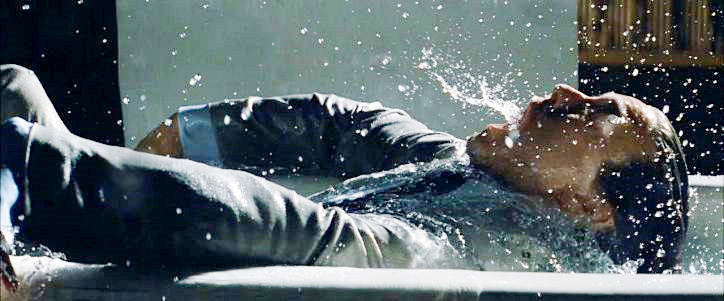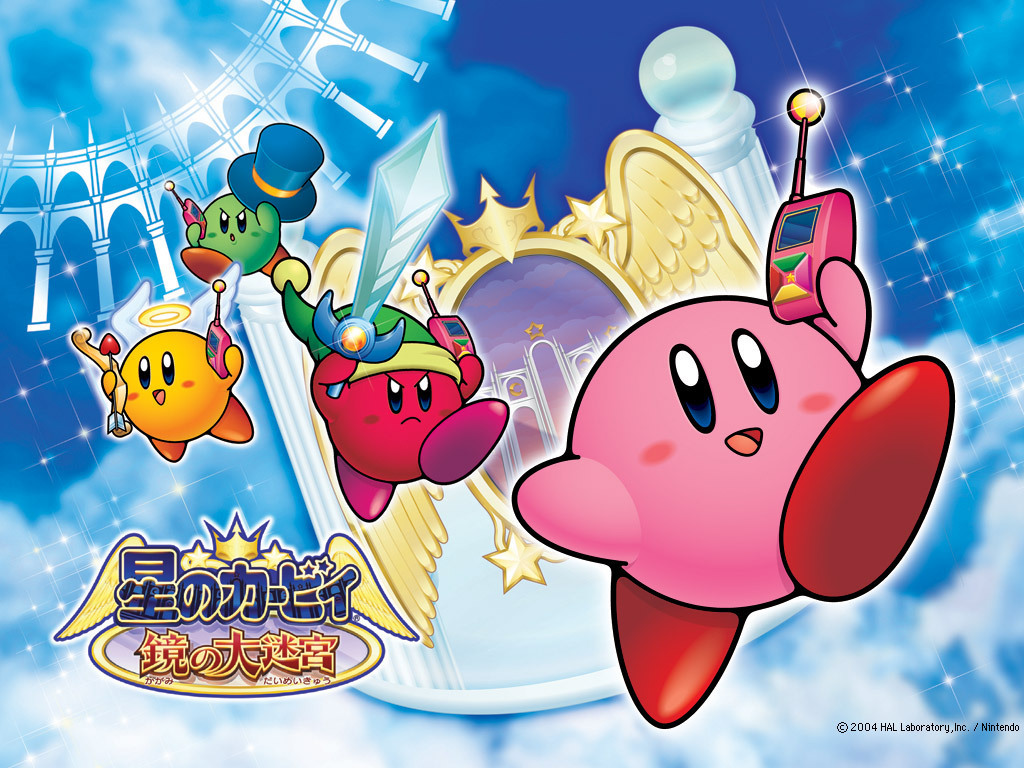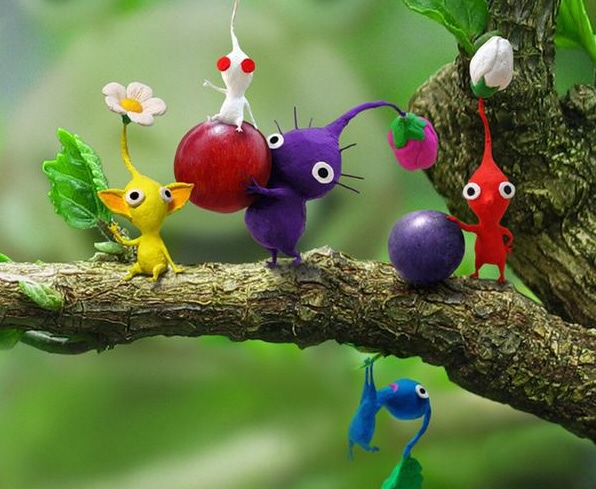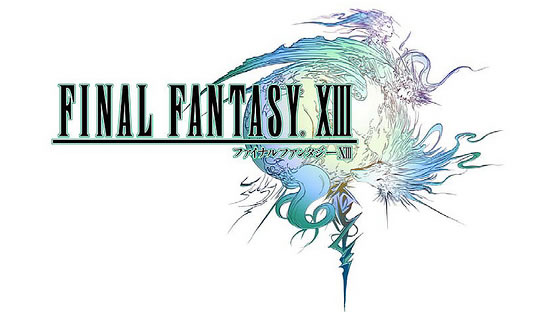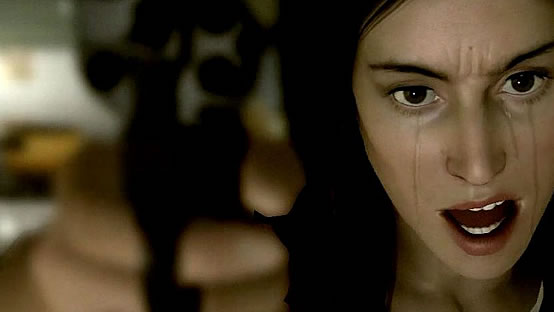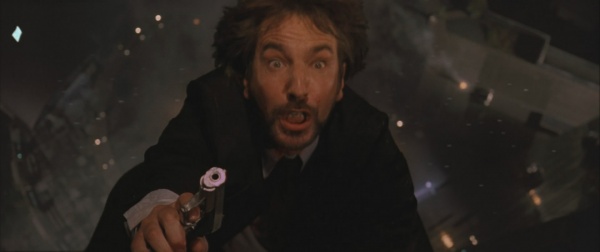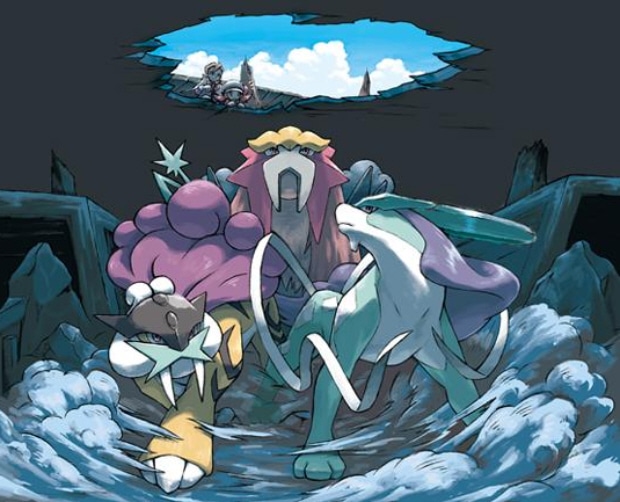
"We are remaking an old game, but this is quite a challenge. Old fans would not want us to mess with their good memories... but there is no point in just redoing the same thing, right? We are working toward something that brings back memories, yet is also completely new!"
Encountering Game Freak's in-game avatars in the Celadon Condominiums is just as surreal as it was ten years ago, but the new text spoken by the company's President strikes me as disclaimer-ey bullshit. This may be a lot of fanboy ranting and nitpicking, but I call fair game. Some of the crap they pulled makes me wonder if the development team ever even played the original Gold and Silver.
For starters, a lot of the polygon-ization doesn't work. While the updated aesthetics are generally pleasant, too many of the 3D models are eyesores. Caves and cliffs are downright ugly, boulders are inconsistently split between pixel-based sprites and polygons, and Gyms resemble planet-sucking, parasitic spaceships. Speaking of the Gyms, I know these are video games and all (JRPGs at that), so arbitrary anachronisms come with the territory, but what is with the interior design of those places? It's not so much the art direction; anyone who's ever played an RPG in their lives is familiar with the overworld/interiors dichotomy; but rather the level design. In what was apparently an attempt to utilize the DS's processing power, each Gym now contains overproduced, pointlessly polygon-based puzzles. Plodding through these is tiresome and annoying -- keeping the old puzzles would have been more than fine. I'm just glad that Kanto and Johto still have their own tree sprites. If they didn't... then I don't know what.
Because that's really the whole point of these games: the contrast of two neighboring lands, each with their own unique culture, unified by those wondrous critters. Kanto is modern; every town brims with the mark of industry and the ease of technology. Celadon and Saffron are the largest cities in the game, and are kept alive by a nearby power plant, the only one in either region. Its importance is evident; until the player restores functionality to the plant, free travel between the regions is impossible, the Magnet Train unable to run without electricity. Perhaps the game's single best expression of Japan's urbanization comes when it is revealed that a family's home was demolished in favor of constructing one of the Magnet Train's stations. Kanto's resident Pokémon reflect this modernization, too: Grimer is said to excrete from industrial waste; Voltorb's discovery postdates the advent of the Poké Ball. Recall the fat man of Pallet Town, his text unchanged since Generation 1: "Technology is incredible!"
Johto is Kanto's illustrious mirror; Johto is historic. Heritage is celebrated everywhere. Buildings are traditionally Japanese, from their visual appearance to the inclusion of the code of etiquette; tiny shoe sprites, set off to the side, are visible in most homes. Ancient pagodas are also maintained in several towns, two of which are central to the story. All five of the original games' legendary Pokémon sprung from these towers. Fitting, because Johto's legendary Pokémon truly were just that; legendary. Tales of these creatures have been passed down for centuries, and are regarded with utmost reverence.
It's saddening, then, that HeartGold and SoulSilver are not the consummate, all-encompassing Pokémon games that Gold and Silver were. The metaphor is barely intact now. In the original Gold and Silver, none of Kanto's legendary Pokémon were present. Their absence was never fully explained, but it perfectly personified Kanto's distance from its own history. Now all of Kanto's legendary Pokémon can be caught. Just as inexplicably, some Hoenn legendaries from Generation 3 have made their way into the game. This would have made much more sense if all of these new Pokémon resided in Johto rather than Kanto, then the beautiful juxtaposition of old and new would have remained, at least in some form. The lowest point of the entire game is the return of Viridian Forest. In Generation 1, Viridian Forest, besides being where Pikachu lived, was the nightmarish first "dungeon" of the game, prepping you for the tough Gym battle ahead. In Generation 2, upon discovering that Kanto was playable in this Generation as well, my heart leapt at the thought of nostalgically retreading familiar ground -- but the painful memories of Viridian Forest distressed the back of my mind. When I finally summoned the bravery to revisit that hellish grove, though, I was greeted with an incredible development: the forest had been cleared! Consistent with the ever-expanding Kanto, Viridian Forest was now nothing more than a few harmless patches of grass. I remember the music clearly: an ingenious remix of the original Viridian Forest theme, but after the first few disjointing chords, a brand new infectiously sweet melody took over, signifying the change. In HeartGold and SoulSilver, with the forest appearing as it did in Generation 1, the most grotesque retcon of all time has taken place. Both the meaning and my memories have been hacked away, but the remix (now a remix of a remix), only furthering the craziness, remains.
The real head-scratcher is the fact that all of this needless addition came at the expense of actual logical implementation, namely of some key features from Generation 3. Both that generation's berry and meme systems are in HeartGold in SoulSilver, but in a cripplingly limited fashion. Every fruit-bearing tree in the game is now an apricorn tree; there are no trees that produce berries on the overworld. This makes absolutely no sense, and is boring, lazy game design. Berries are now restricted to a key item, operational only through a menu. The meme system is really no more than a cameo reference. Remember those wacky, yet effortlessly profound NPC responses from Ruby, Sapphire, and Emerald? (some of my personal favorites: HAS DANCE, LIFE LESSONS, STOCK PRICES) Yeah, they're gone. But it's more cool this way. The more legendaries and useless features a Pokémon game has, the better. All in the name of fan-service, right?
It is so strange to think that in a little more than a decade, a weird RPG about bug-catching on the Game Boy, glitchy as hell and full of poor localization (did it ever occur to anyone how racist the name Porygon is, or why there exist female Mr. Mime?), has become the behemoth that we know it today. What many surely wrote off as a cultural oddity and no more than the latest marketing phenomenon, was for many kids of the right age, a way of life. But at the core of the cult, before the anime and the trading cards and the mountains of merchandise, there was a handful of great video games. The Gold and Silver versions were for a lot of fans the best the series ever got, and Nintendo's lowest common denominator remakes bank more on nostalgia than anything else. Indeed, on the whore, these remakes are about the worst that they could have been... but damned if I haven't already put 80 hours into my adventure. It's painfully obvious that these games came more out of necessity than passion; it makes sense for Nintendo to want every single Pokémon available in a single generation, so the magic of the original Gold and Silver isn't really there... but most of the fun is. It's still Pokémon, and I will always, always love Pokémon.
"If you treat your Pokémon nicely, they will love you in return."
LIFE LESSONS, people. LIFE LESSONS.
